Pixel 6 vs. Pixel 6 Pro — Our advice on which phone to buy
Choosing between Google's new Pixel 6 and Pixel 6 Pro phones isn't easy, so we made this guide to help you out!
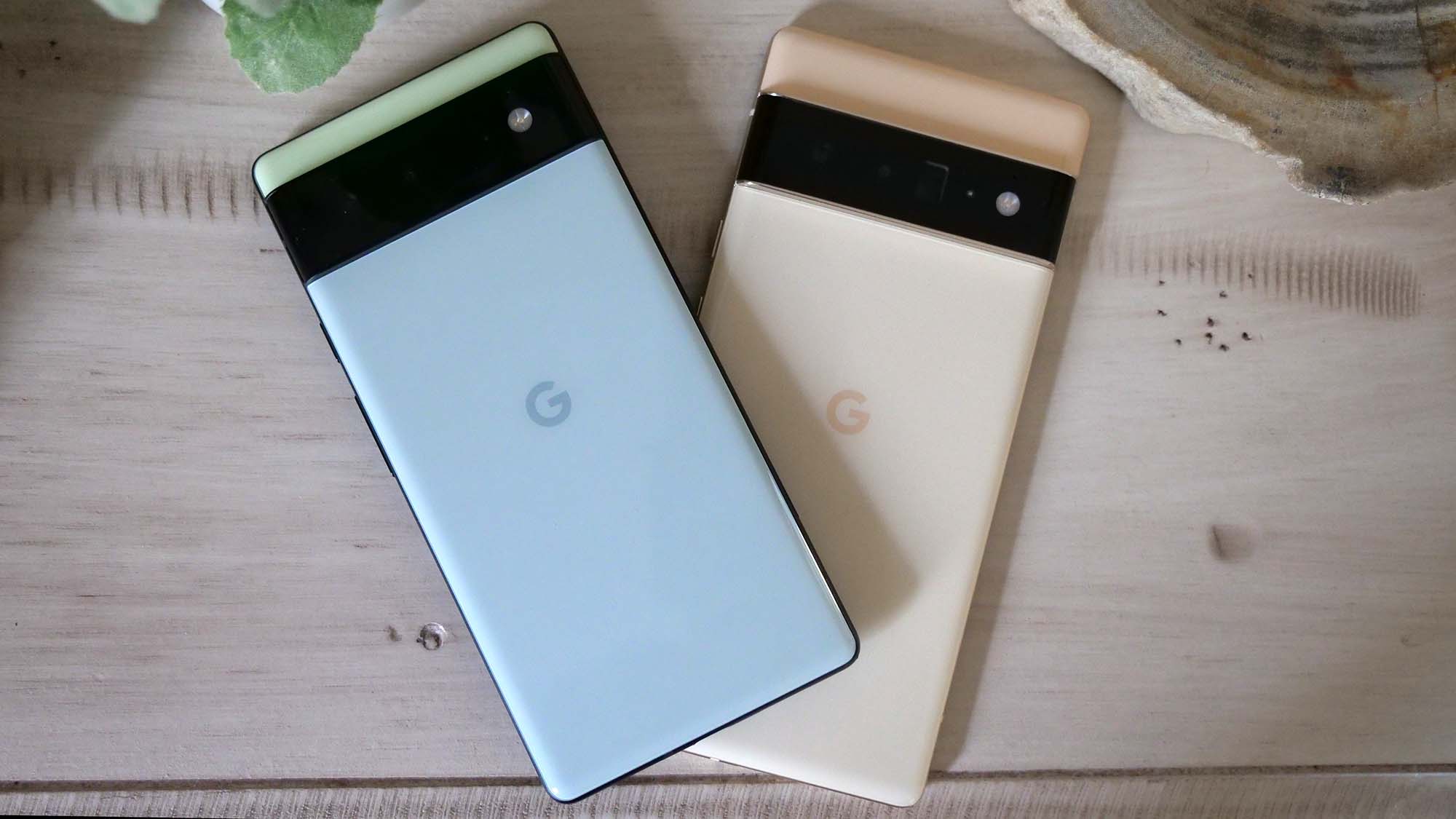
Google has finally unveiled the Pixel 6 and Pixel 6 Pro, marking a new era for the company's smartphone efforts. If you're an Android user or are growing weary of your iPhone, then you should strongly consider these two models.
Google has a reputation for crafting some of the best Android devices in large part due to their exceptional cameras. The Pixel 6 and Pixel 6 Pro are a major upgrade to anything Google has released in the past, promising a more premium design, faster performance, better cameras, gorgeous displays, and some clever exclusive software features.
- Pixel 6 and Pixel 6 Pro hands-on: Check out Google's new flagship phones
- Pixel 6 vs. Galaxy S21: Which should you buy?
- Best Google Pixel 6 deals — AT&T, Google and more
If you've settled on Pixel, then there is only one more decision to make: choosing between the Pixel 6 and Pixel 6 Pro. In the past, Google made it a point to offer the same phone in different sizes. These two new models, however, differ in many ways, which can complicate things. As such, it's more important than ever to know the differences between the Pixel 6 and Pixel 6 Pro.
So we've done the hard work for you. In this article, we'll identify the pros and cons of each device and help you decide which one is right for your needs.
Pixel 6 vs. Pixel 6 Pro: Price and configurations
There is a significant price gap between these two devices, more than one might expect from two phones that share the same name.
Those on a tight budget should only consider the Pixel 6, which starts at an aggressive $599 unlocked for the 128GB version. Doubling the storage to 256GB raises the price by $100 to $699.
Not only is the Pixel 6 Pro larger, but as you'll read below, it is a more premium device. As such, the 6 Pro starts at $899 for the 128GB model. Bumping up to 256GB raises the price to $999 and the 512GB model is $1,099.
Stay in the know with Laptop Mag
Get our in-depth reviews, helpful tips, great deals, and the biggest news stories delivered to your inbox.
Pixel 6 vs. Pixel 6 Pro specs
| Row 0 - Cell 0 | Pixel 6 | Pixel 6 Pro |
| Displays | 6.4-inch FHD+ (2400x1080) OLED at up to 90Hz | 6.7-inch QHD+ (3120x1440) LTPO OLED at up to 120Hz |
| 5G support | Yes | Yes |
| CPU | Google Tensor | Google Tensor |
| RAM | 8GB | 12GB |
| Storage | 128 or 256GB | 128, 256 or 512GB |
| Rear cameras | 50MP wide-angle f/1.85; 12MP ultra-wide f/2.2 | 50MP wide-angle f/1.85; 12MP ultra-wide f/2.2; 48MP telephoto f/3.5 |
| Front cameras | 8MP f/2.0 | 11.1MP f/2.2 |
| Battery capacity | 4614mAh | 5003mAh |
| Water resistance | IP68 | IP68 |
| Colors | Stormy Black, Kinda Coral, Sorta Seafoam | Stormy Black, Cloudy White, Sorta Sunny |
| Size | 6.2 x 2.9 x 0.4 inches | 6.5 x 3.0 x 0.4 inches |
| Weight | 7.3 ounces | 7.41 ounces |
Pixel 6 vs. Pixel 6 Pro: Design
What the specs table above won't tell you is how the design of these two phones differs. The good news is that they are almost identical in appearance.
However, there are a few important differences.
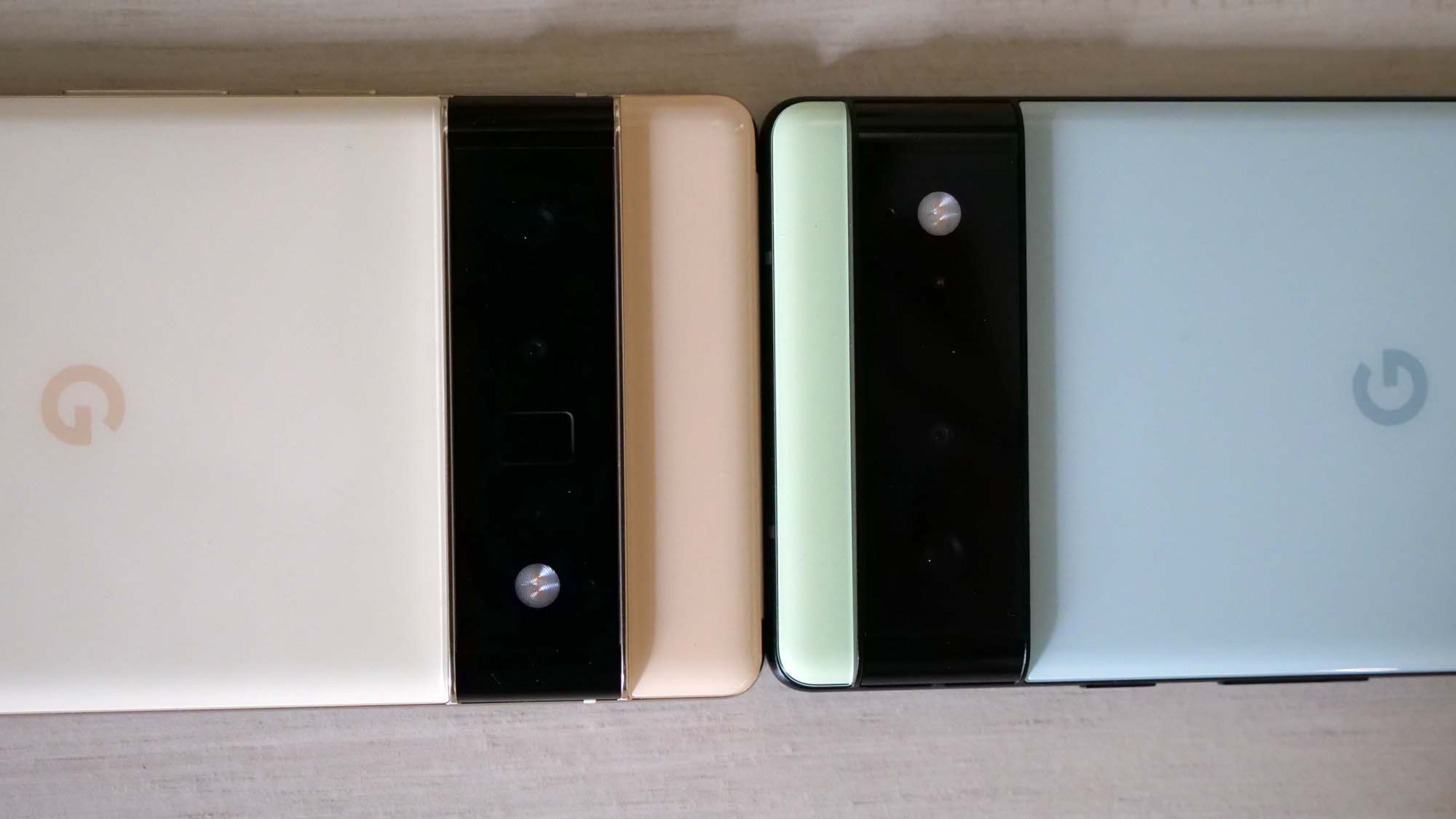
Both of these phones are large but the Pixel 6 Pro is slightly taller at 6.5 inches versus 6.2 inches of the Pixel 6. I've voiced my annoyance at Google for only offering large or extra-large devices, but some folks might appreciate these cruiser-class slabs. Interestingly, the Pixel 6 Pro (7.4 ounces) is imperceptibly heavier than the Pixel 6 (7.3 pounds) despite being a good deal larger.
One clear advantage the Pixel 6 Pro enjoys over the standard model is more premium materials. The back of the Pixel 6 is coated in Gorilla Glass 6 whereas the Pixel 6 Pro flaunts stronger Gorilla Glass Victus and has a polished alloy frame that wraps around the back, adding to its luxe appearance. The Pixel 6 Pro also has waterfall edges for a more premium look and feel, while the Pixel 6 has a standard flat screen.
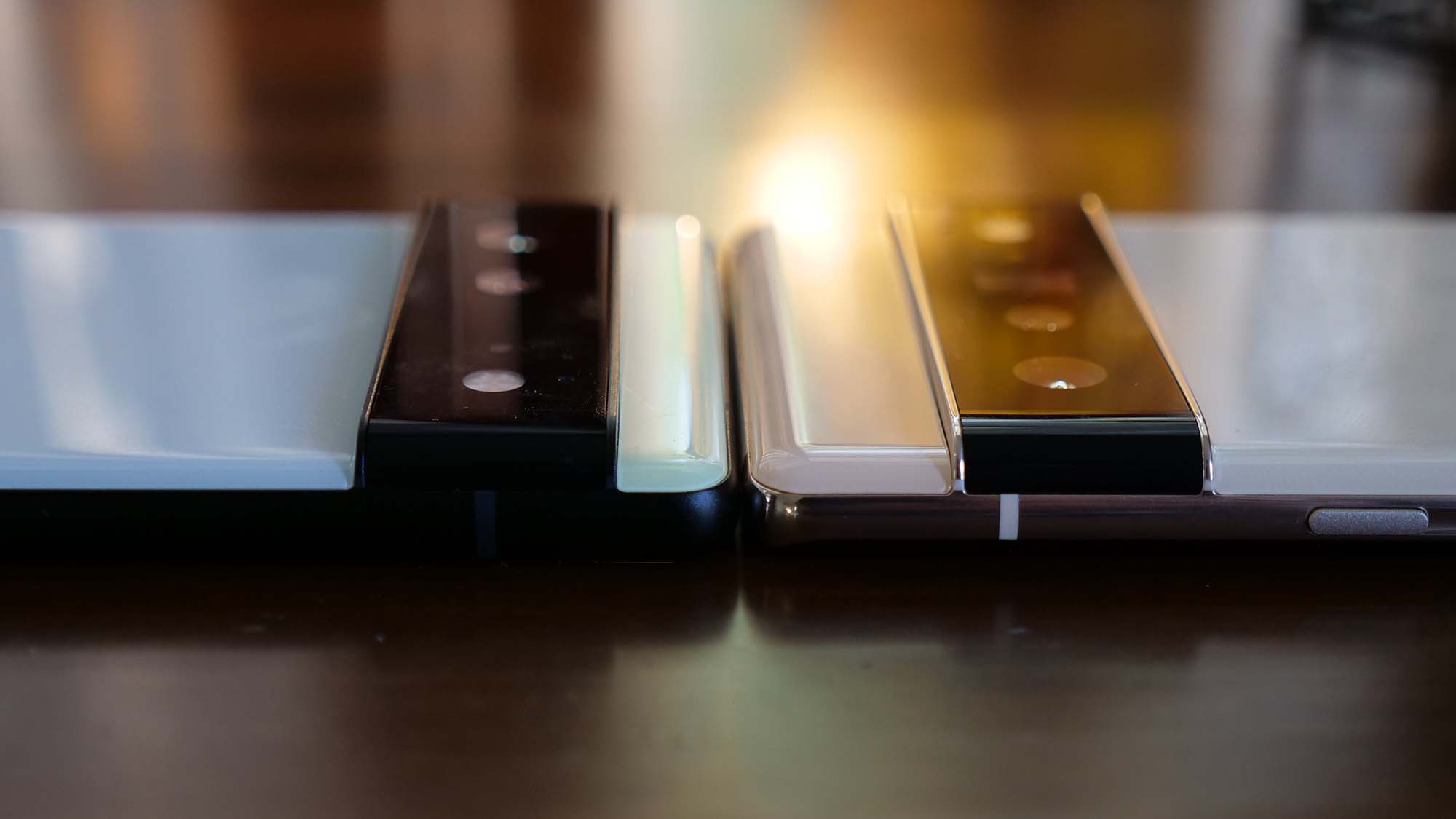
Color options are the other main differentiator though both feature an attractive two-tone scheme. The standard Pixel 6 comes in Sorta Seafoam and Kinda Coral as well as a more understated Stormy Black color scheme. The Pixel 6 Pro plays it safe with Stormy Black, Cloud White and Sorta Sunny.
Takeaway: The Pixel 6 and Pixel 6 Pro share similar designs, however, the pricier model is taller, and has waterfall edges along with more premium materials. Your preference in aesthetic will likely come down to color options, with the standard model flaunting bolder hues.
Pixel 6 vs. Pixel 6 Pro: Display
There are a few key differences when comparing the displays on the Pixel 6 and Pixel 6 Pro. The most obvious is the size; the Pixel 6 has a 6.4-inch screen whereas the Pixel 6 Pro has a 6.7-inch panel. It really is a matter of wanting a large screen or an extra-large one.
On paper, these both sound like gorgeous displays. Look closely and you'll see one significant advantage for the Pixel 6 Pro. But first, let's look at the specs.
The Pixel 6 has a 6.4-inch, FHD+ resolution (2400 x 1080-pixels) OLED display with a 90Hz refresh rate.
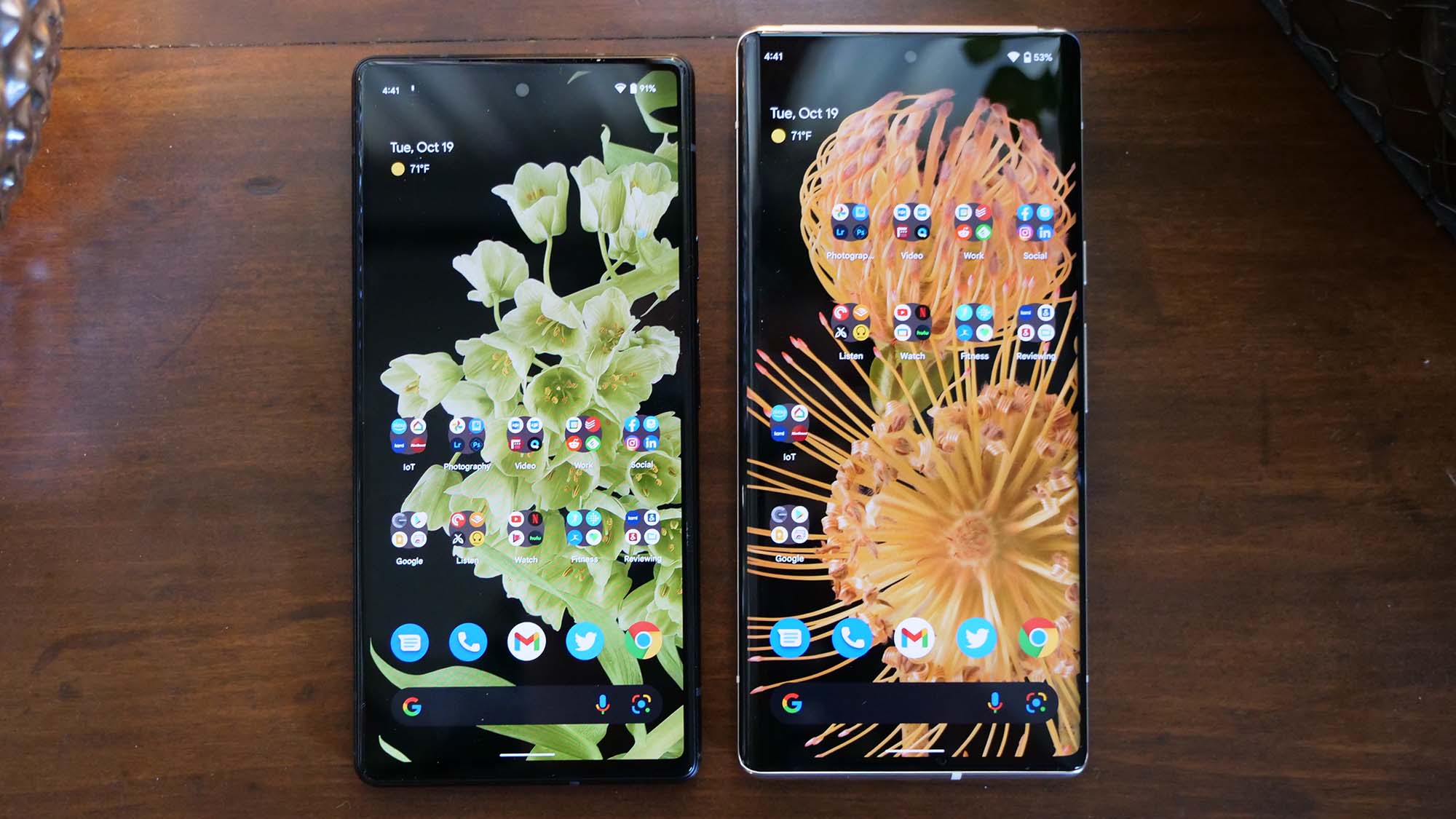
Turning to the Pixel 6 Pro, its 6.7-inch LTPO OLED display has a higher QHD+ (3120 x 1400-pixel) resolution and supports a 120Hz refresh rate. With a higher refresh rate, the Pixel 6 Pro should benefit from smoother animations.
Not only that, but the Pixel 6 Pro supports a dynamic refresh rate, meaning the panel can adjust from 10Hz up to 120Hz based on the content you're viewing. Watching a video or playing a game? Then the display will jump up to 120Hz. Scrolling slowly down a webpage? Dropping the screen to 10Hz will improve battery life.
Without this adaptive refresh rate feature, the Pixel 6 may struggle on our battery life tests as it is locked to either 60Hz or 90Hz. Even if it doesn't, the 120Hz refresh rate on the Pixel 6 Pro means fast on-screen movements should look smoother on the larger device, though I doubt most people would notice much of a difference unless they compare these side-by-side.
Both phones support HDR, a high brightness mode, a million-to-one contrast ratio and full 24-bit depth for 16 billion colors.
Takeaway: The Pixel 6 Pro has a larger display with a maximum 120Hz refresh rate that adjusts from 10Hz up based on what you're viewing. The Pixel 6 Pro goes up to 90Hz and can only drop to 60Hz.
Pixel 6 vs. Pixel 6 Pro: Cameras
Both phones share the same primary camera, a 50MP Octa PD Quad Bayer with an f/1.85 aperture and 1.2µm pixel width. This new sensor is 1/1.31”, making it one of the largest in any smartphone on the market.
The Pixel 6 and Pixel 6 Pro also share the same secondary ultra-wide sensor which actually drops from 16MP to 12MP but has a larger 1.25µm pixel width, the same f/2.2 aperture, and a wider 114-degree field of view.
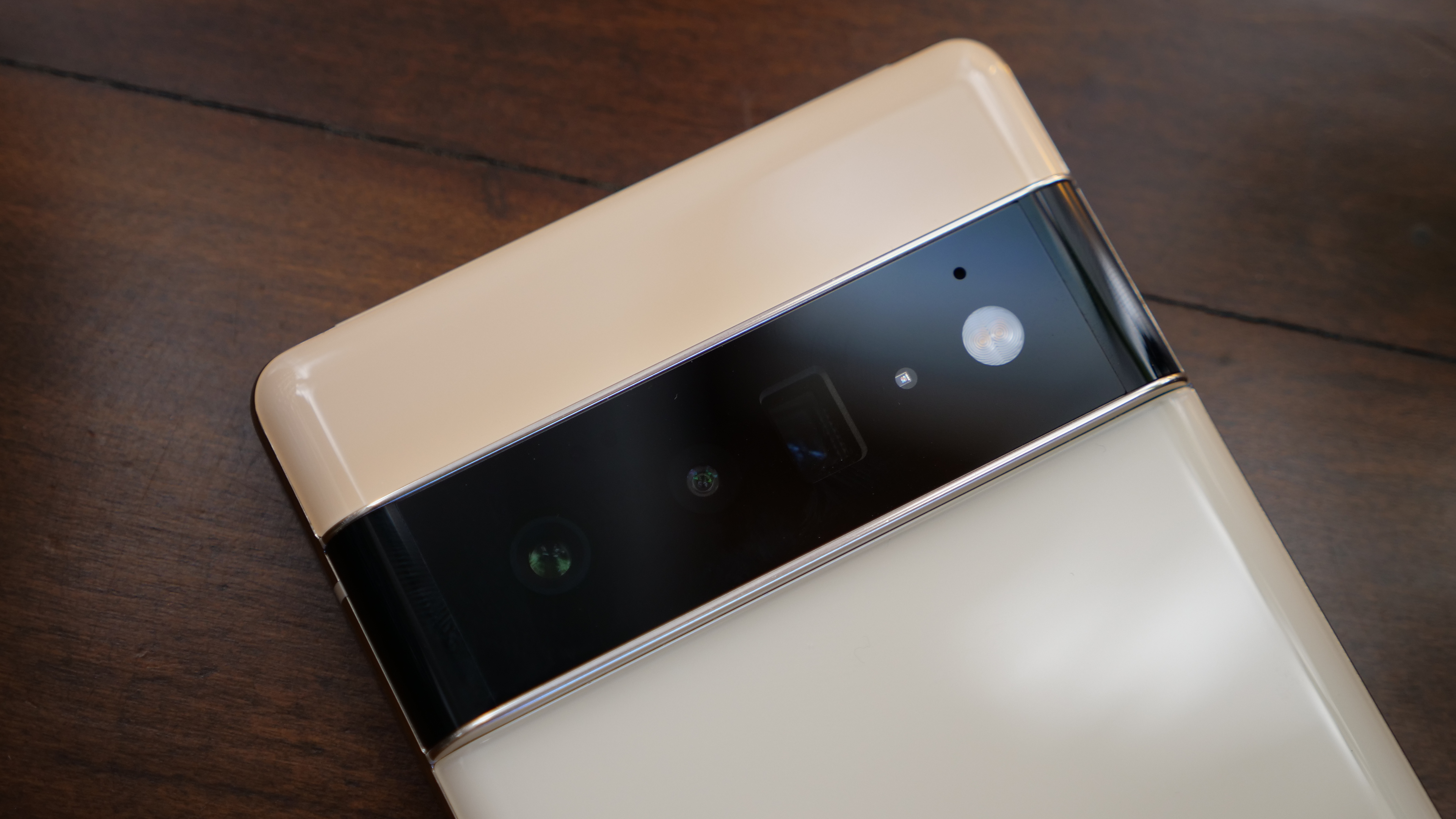
Other similarities include laser detect autofocus, optical and electronic image stabilization, a spectral and flicker sensor (helps with pulsing light from LCD screens, LED lighting, etc…), Google’s Fast camera launcher, and some fun software tools, like Magic Eraser.
There is one major difference with the rear camera. The Pixel 6 Pro adds a third telephoto (zoom) lens, a 48MP snapper with an f/3.5 aperture, 0.8µm pixel width and a half-inch image sensor size. Google claims it can deliver Super Res Zoom at up to 20x so if you find yourself needing more reach when you take shots, the Pixel 6 Pro might be the right choice.
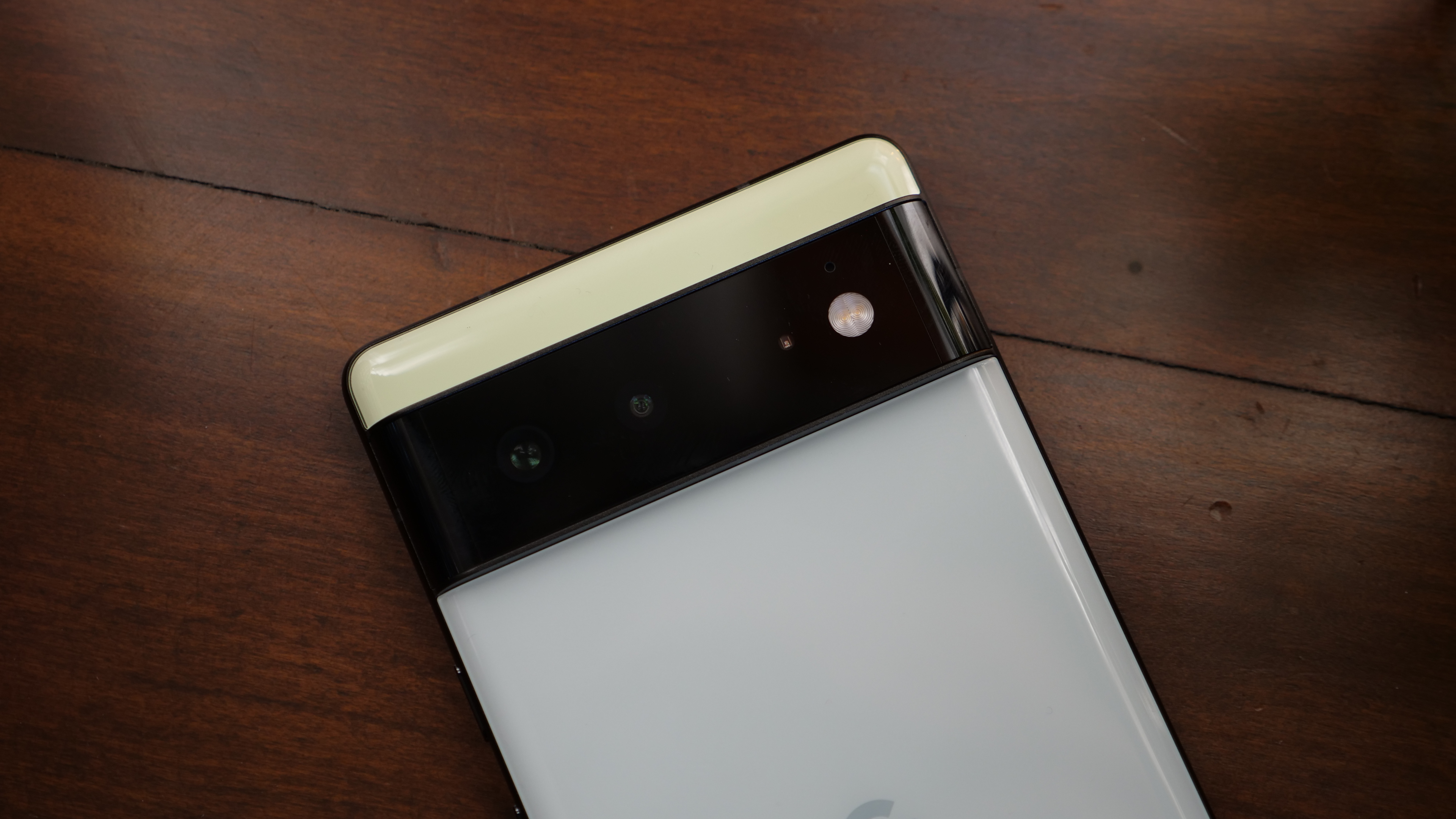
The front cameras are also different. The Pixel 6 offers an 8MP selfie cam with a superior aperture at f/2.0 but the Pixel 6 Pro has a sharper 11MP, f/2.2 lens with a larger pixel size at 1.22µm versus 1.12µm. Perhaps most importantly, the Pixel 6 Pro's front-facing camera has a wider field of view of 94 degrees compared to 84 degrees.
As for video quality, the specs for both Pixel 6 and Pixel 6 Pro are identical with a fairly typical 4K at 30 frames per second or 60 fps and 1080p at 30 fps or 60 fps.
Takeaway: Both phones boast impressive cameras specs but the Pixel 6 Pro has the edge with a 48MP, f3.5 lens for telephoto shots and an 11MP front-facing camera with a wider field of view.
Pixel 6 vs. Pixel 6 Pro: Performance
While both Pixel phones use the same custom Google Tensor chip, the Pixel 6 Pro should have a performance edge thanks to its 12GB of RAM. Opting for the cheaper device gets you 8GB of RAM, which is fine for most people but means the Pixel 6 might not have the same staying power as its larger sibling.
How fast are these phones? Google says the Pixel 6 and Pixel 6 Pro deliver up to 80% faster performance than the Pixel 5. While that doesn't put them anywhere near the current Snapdragon 888 or Apple A15 (or even A14 Bionic), it’s still a significant jump from last year.
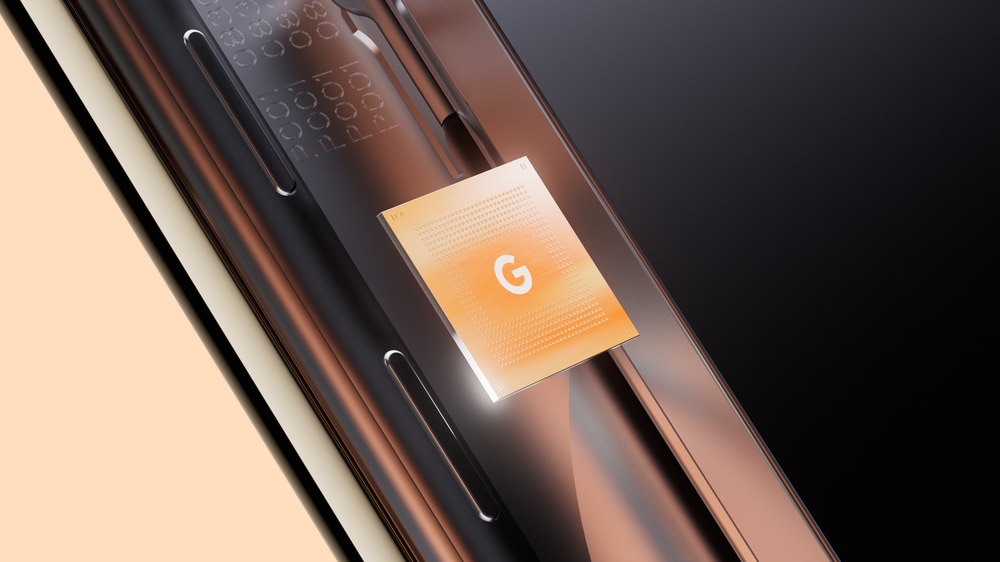
We'll find out more once we've completed our benchmark tests and will update this face-off after our Pixel 6 and Pixel 6 Pro reviews go live.
Takeaway: The Pixel 6 and Pixel 6 Pro share the same Google Tensor chip so you should expect similar performance. That said, the 6 Pro gets you 12GB of RAM, up from 8GB on the Pixel 6.
Pixel 6 vs. Pixel 6 Pro: Battery life and charging
Larger phone, larger battery. The Pixel 6 comes with a 4,614mAh battery while the Pixel 6 Pro has a 5,003mAh cell. That doesn't mean the larger device lasts longer on a charge — remember, it has to push more pixels.
We're hopeful for both phones because Google claims they will deliver “Beyond 24-hour battery life” and up to 48-hours of battery life if you use Extreme Battery Saver.
Charging gets a nice boost with support for up to 30W fast charging. The bad news is that Google isn’t including its 30W USB-C charger in the box, so you’ll need to buy it separately or find another 30W USB-C charger with USB-PD 3.0 support to enjoy those speeds. Google says both phones get up to a 50% charge in about 30 minutes with this new charger.
Both phones also support Qi wireless charging, fast wireless charging, and battery share.
Takeaway: This one comes down to our in-house battery life tests because battery capacity isn't a good measure of runtimes. We're guessing the Pixel 6 Pro will do better, though, because of its adaptive refresh rate.
Pixel 6 vs. Pixel 6 Pro: Which should you buy?
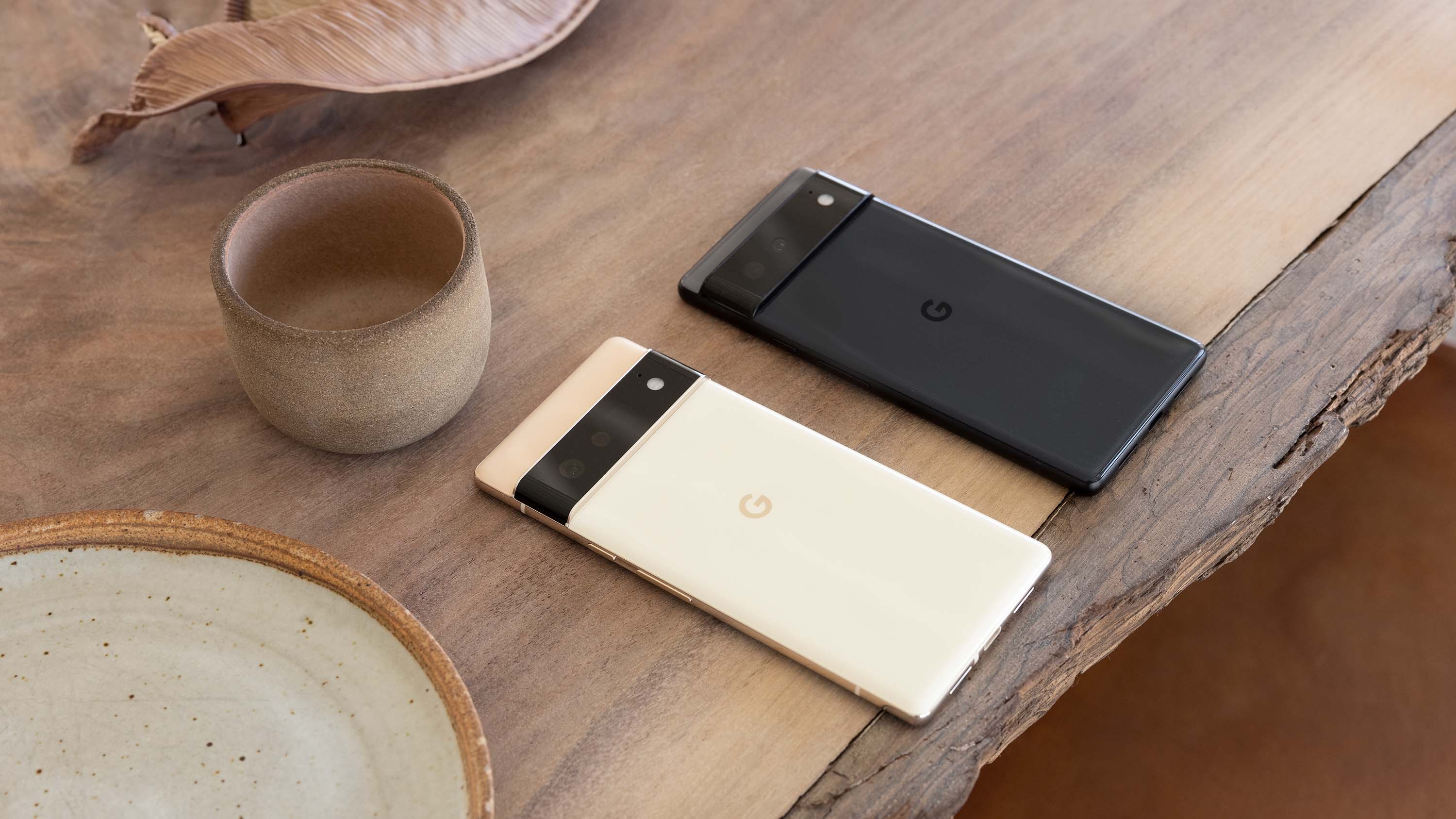
We're in the process of testing these phones, but for now, I recommend the Pixel 6 to most people because of its aggressive $599 price, which makes it $300 cheaper than the Pixel 6 Pro.
Yes, the Pixel 6 Pro has advantages over the Pixel 6, but they don't justify the price hike for more users. That said, there are some exceptions. If you have a large budget and want the best Android device around, the Pixel 6 Pro could be that device. Also, if you're a former Galaxy Note fan who needs the largest display, the Pixel 6 Pro's 6.7-inch panel should satisfy your needs.
But perhaps the most significant advantage in favor of the Pixel 6 Pro is its 48MP telephoto lens for zooming in on subjects. If this is a must-have for you, then the 6 Pro is your only option because the Pixel 6 lacks that feature altogether.
Other Pixel 6 Pro perks include more RAM (12GB vs. 8GB) and some fancier materials, including Gorilla Glass Victus on the rear and a polished alloy frame. It might be tempting to go with the Pixel 6 Pro after reading about these advantages, but the Pixel 6 seems to us like a better value for the everyday consumer when you consider what you get for the price.
We will be posting full Pixel 6 and Pixel 6 Pro reviews soon and will update this article with more info to help you make the right decision.
Phillip Tracy is the assistant managing editor at Laptop Mag where he reviews laptops, phones and other gadgets while covering the latest industry news. After graduating with a journalism degree from the University of Texas at Austin, Phillip became a tech reporter at the Daily Dot. There, he wrote reviews for a range of gadgets and covered everything from social media trends to cybersecurity. Prior to that, he wrote for RCR Wireless News covering 5G and IoT. When he's not tinkering with devices, you can find Phillip playing video games, reading, traveling or watching soccer.

